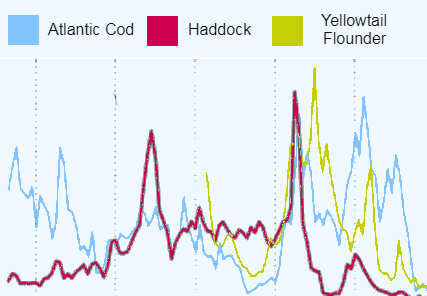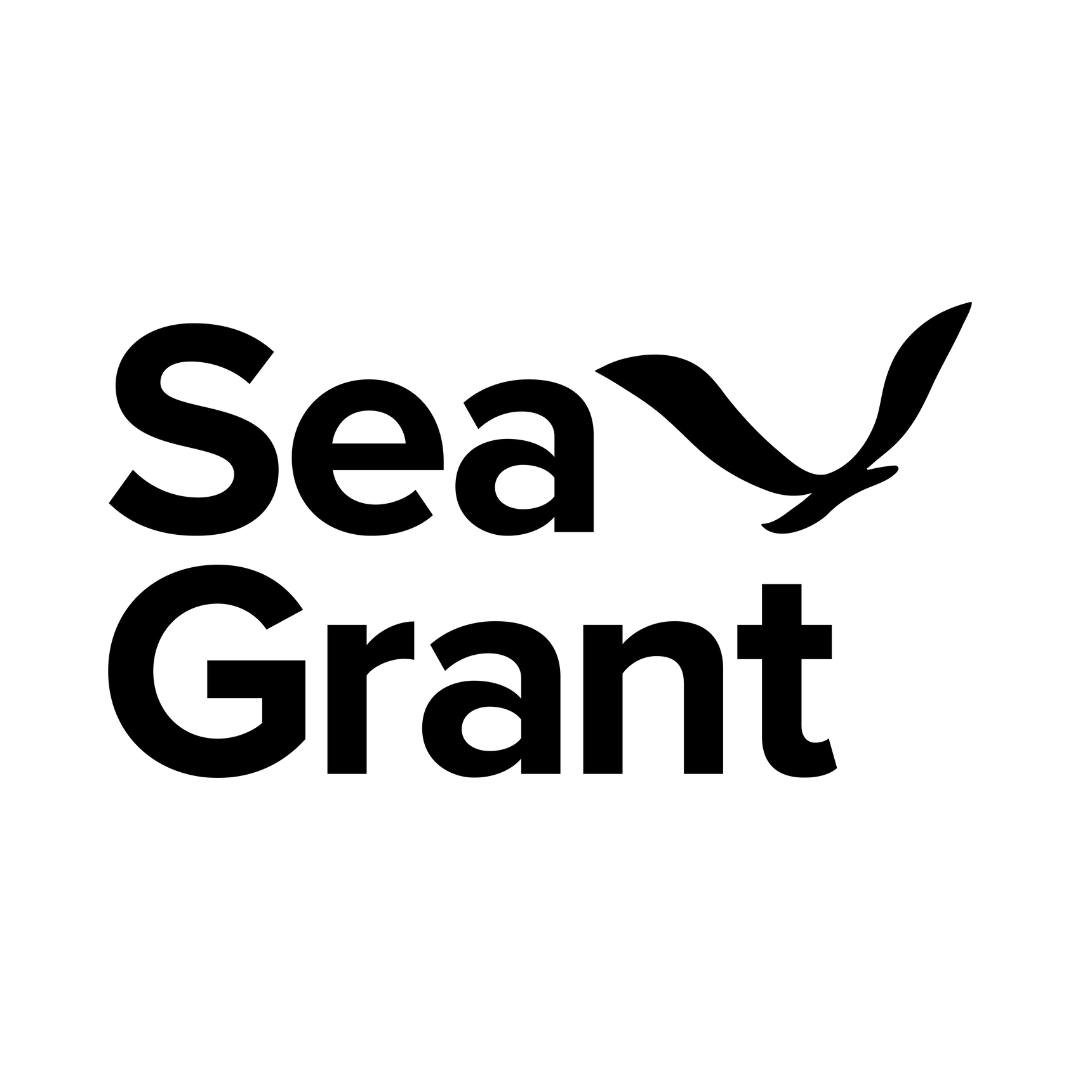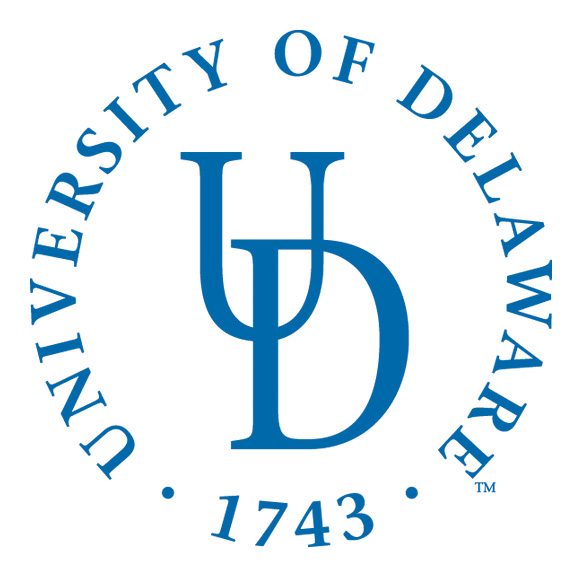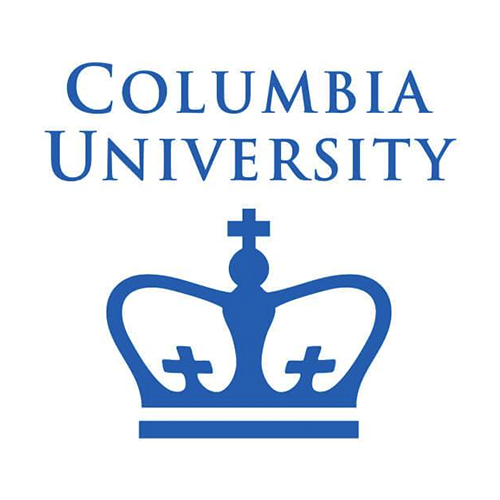A Huge Percentage of Groundfishes are Overexploited
The pie chart on the left shows how aquatic life is being exploited, and what percentage of it is being either underexploited, fully exploited, or overexploited. As you can see, an immense amount of aquatic life is being overexploited, which can lead to many concerning issues, as explained further in depth in the crisis section.
Fishes Experience a Massive Drop in Population in Past Years
The graph on the right depicts population change in 3 different species, Altantic Cod, Haddock, and Yellowtail Flounder. Clearly shown, in the recent years, the population has taken a deep dive down.
PSA: The graph does is not fully accurate, but a general view of the populations. The fish's population numbers are also not relational. For an accurate graph, please visit the Crisis section

Where Does The Information Come From?
The sources used in this project are highly reputable and diverse, including Columbia University, MIT Sea Grant, Gulf of Maine Research Institute, and University of Delaware. These institutions are all well-known for their contributions to research and innovation in a variety of fields, making them excellent resources for researching overfishing. By drawing on the expertise of these organizations, this project is able to present a informative view on overfishing.
What Is The Goal of This Website?
The goal of this website, AquaVisonMA, is to spread awareness about the issues of overfishing and how to prevent it. Our primary attraction, however, is the Massachusetts Fishing Guide Map, which contains all the information related to fishes in the lakes and ponds of MA. This way, the common masses can prevent overfishing in local ponds and lakes. This issue is considerably less significant than industrial overfishing, however, the map can give you an idea of which fishes to watch out for, which are endangered, the laws and regulations and a general list of fishes in the water body.
How Can You Contribute to Reduce Overfishing?
There are many ways that you can contribute to reducing overfishing. One way is to educate yourself and others about the issue and how it affects our environment and food systems. You can volunteer to teach about this issue at a school or a library. You can also make informed choices when purchasing seafood by choosing sustainably sourced options and avoiding those that are overfished or caught using harmful methods. Another way to contribute is to support organizations that work to protect our oceans and marine life, whether through donations or volunteer work. You can also participate in beach and waterway cleanups to help remove fishing gear and other debris that can harm marine life. Finally, you can advocate for stronger regulations and policies that protect our oceans and ensure sustainable fishing practices. By taking these steps, you can help make a positive impact on the health of our oceans and the future of our planet.
How Can You Contribute to This Website?
Contributing can really help us improve this website and overall user experience. Contributing can mean many things. This includes:
- Identifying Bugs
- Fixing Bugs
- Proposing Changes
- Adding a Component
- QOL Improvement
- Etc...



